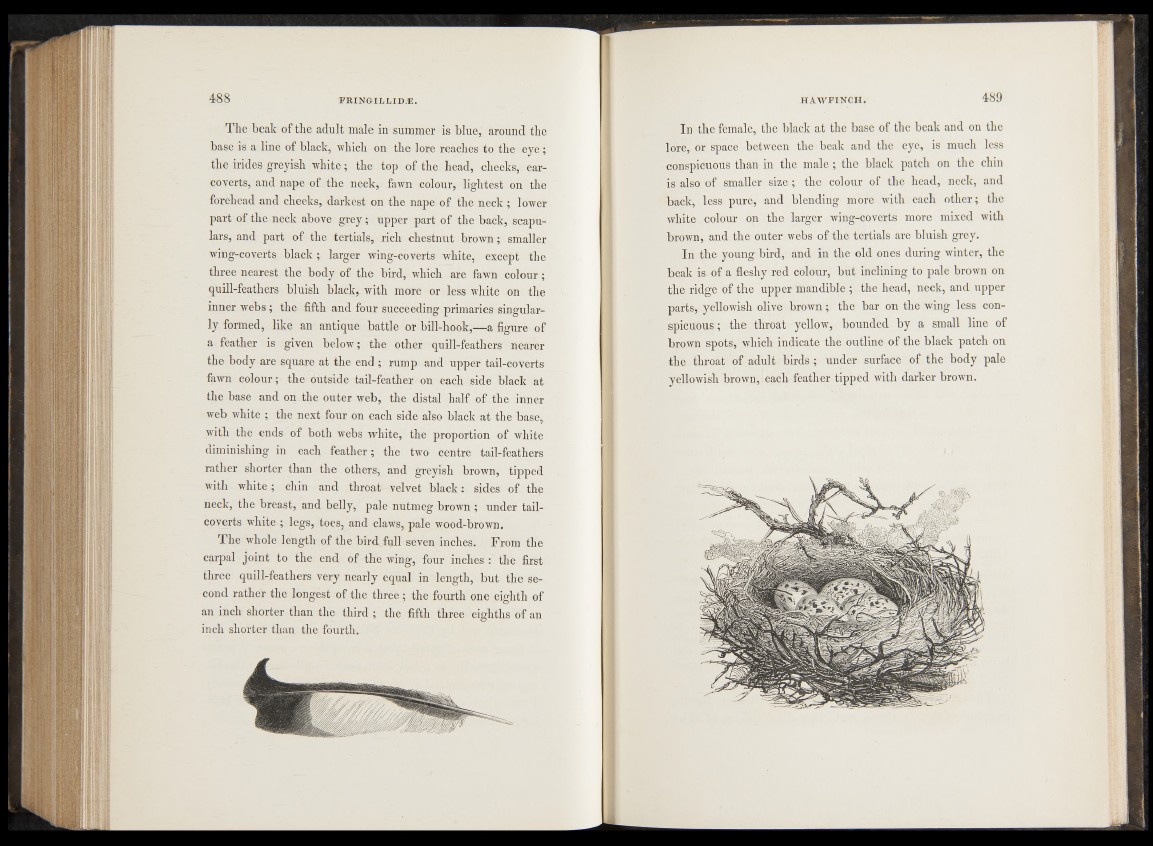
The beak of the adult male in summer is blue, around the
base is a line of black, 'which on the lore reaches to the eye;
the irides greyish white; the top of the head, cheeks, ear-
coverts, and nape of the neck, fawn colour, lightest on the
forehead and cheeks, darkest on the nape of the neck ; lower
part of the neck above grey; upper part of the back, scapulars,
and part of the tertials, rich chestnut brown; smaller
wing-coverts black; larger wing-coverts white, except the
three nearest the body of the bird, which are fawn colour;
quill-feathers bluish black, with more or less white on the
inner webs ; the fifth and four succeeding primaries singularly
formed, like an antique battle or bill-hook,—a figure of
a feather is given below; the other quill-feathers nearer
the body are square at the end ; rump and upper tail-coverts
fawn colour; the outside tail-feather on each side black at
the base and on the outer web, the distal half of the inner
web white ; the next four on each side also black at the base,
with the ends of both webs white, the proportion of white
diminishing in each feather; the two centre tail-feathers
rather shorter than the others, and greyish brown, tipped
with white; chin and throat velvet black: sides of the
neck, the breast, and belly, pale nutmeg brown ; under tail-
coverts white ; legs, toes, and claws, pale wood-brown.
The whole length of the bird full seven inches. From the
carpal joint to the end of the wing, four inches : the first
three quill-feathers very nearly equal in length, but the second
rather the longest of the three; the fourth one eighth of
an inch shorter than the third ; the fifth three eighths of an
inch shorter than the fourth.
In the female, the black at the base of the beak and on the
lore, or space between the beak and the eye, is much less
conspicuous than in the male ; the black patch on the chin
is also of smaller size ; the colour of the head, neck, and
back, less pure, and blending more with each other; the
white colour on the larger wing-coverts more mixed with
brown, and the outer webs of the tertials are bluish grey.
In the young bird, and in the old ones during winter, the
beak is of a fleshy red colour, but inclining to pale brown on
the ridge of the upper mandible ; the head, neck, and upper
parts, yellowish olive brown; the bar on the wing less conspicuous
; the throat yellow, bounded by a small line of
brown spots, which indicate the outline of the black patch on
the throat of adult birds ; under surface of the body pale
yellowish brown, 1 each feather tipped with darker brown.